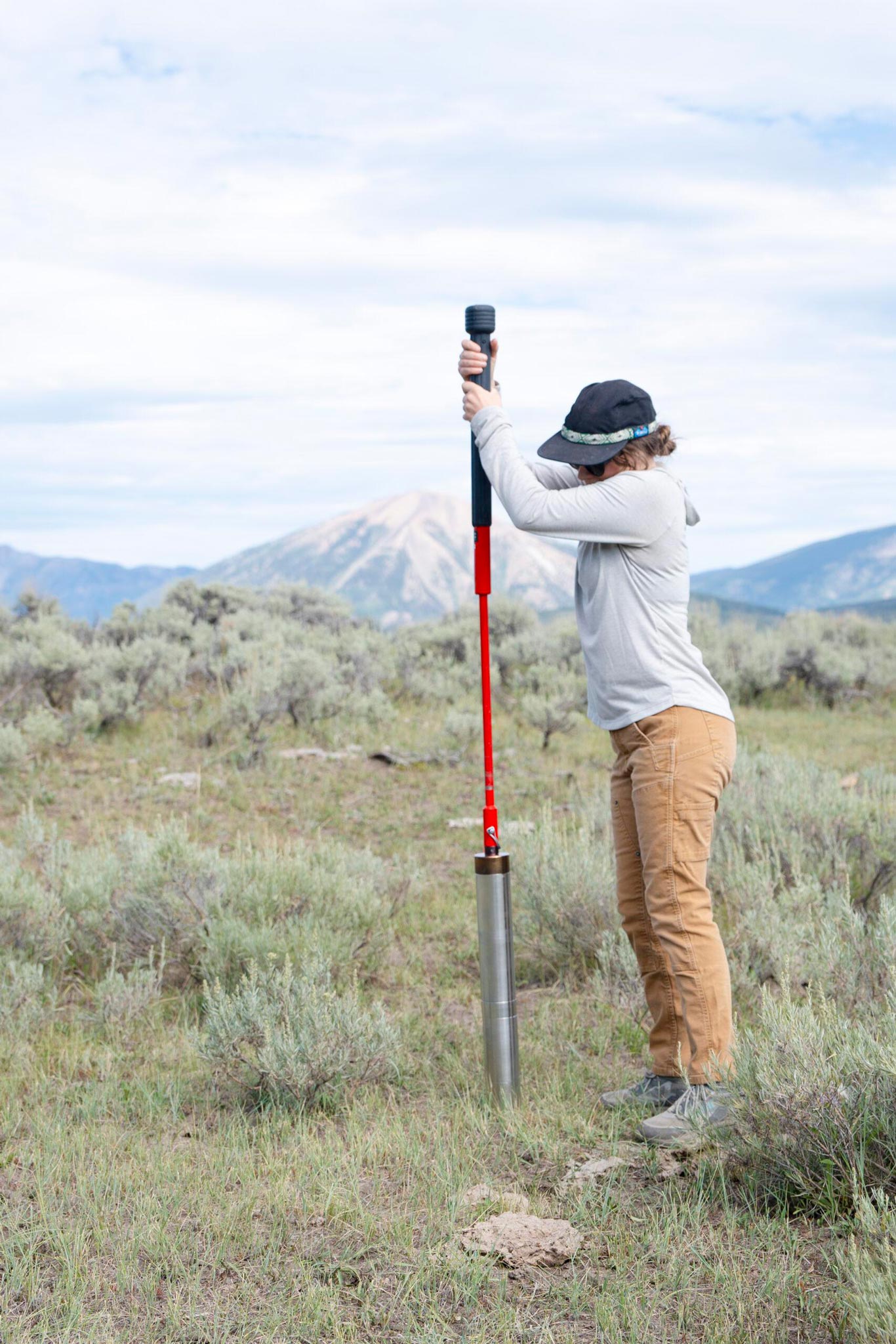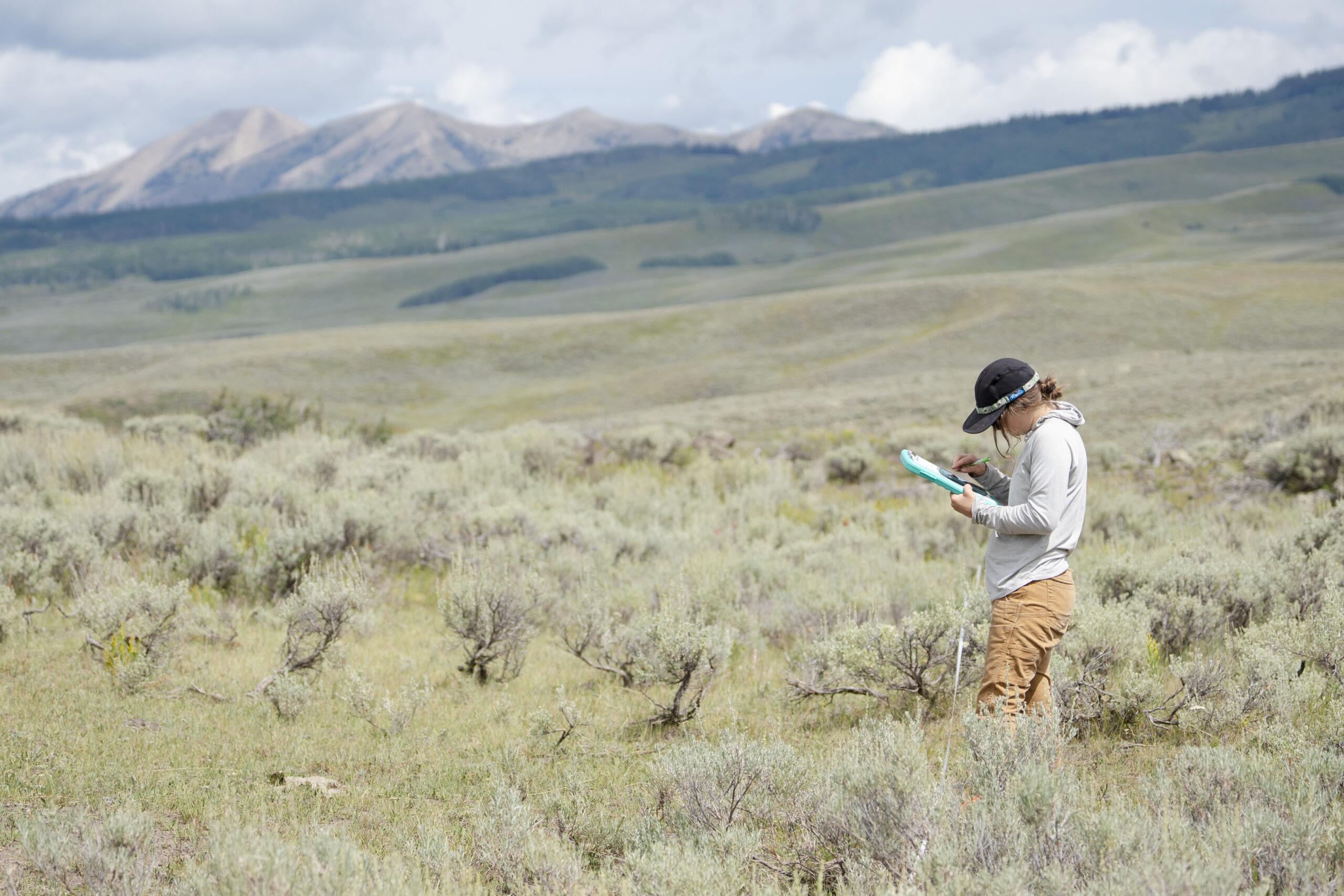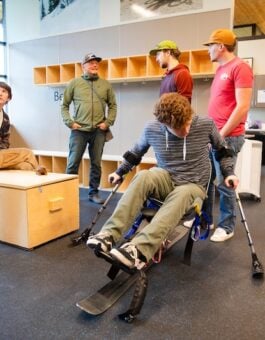At more than 250,000 square miles, the sagebrush steppe is one of the largest ecosystems in North America. Yet, it’s also one of the least studied.
One of the biggest unknowns is how the landscape has changed over time as environmental factors like temperature and moisture shifted, and periodic wildfires removed some plants and allowed others to flourish.
Now, Western Colorado University’s Phoebe Roberts, a second-year graduate student pursuing dual M.S. in Ecology and Master of Environmental Management degrees, is piecing together thousands of years of vegetation, climate, and wildfire history from clues in the region’s soil.
Her work, supported by a cooperative funding agreement with the Bureau of Land Management (BLM) and done in collaboration with assistant professor Dr. Hannah Carroll, provides important data for land managers and biologists trying to understand the ecological conditions that accompanied the decline of the area’s endangered Gunnison sage-grouse population.

By collecting samples from high in the bird’s range, where the species is doing relatively well, and samples taken lower in the range, where the population is in decline, Roberts can compare microscopic fossils of ancient silica cells known as phytoliths to identify the type of sagebrush that contributed organic material to the soil.
“I’d consider myself a pretty good botanist, but trying to identify plants from microscopic silica fossils is a whole different game. I have basically been re-teaching myself plant identification in an entirely different way,” Roberts said. “It is really cool to see how all these different genera of plants are preserved in the soil.”
Because sagebrush grows best in relatively dry conditions, soil on the steppe accumulates slowly, at a rate of about 1 inch per 1,000 years. “Our goal is to go back at least 2 or 3,000 years,” Dr. Carroll said.
The process of removing the silica from the soil is laborious and time-consuming. After 1-meter cores are pulled from several locations, they are sliced into 1-centimeter sections. Each soil sample requires 12 to 14 hours for processing in a series of chemical baths and a soak in boiling nitric acid, which leaves nothing but the phytoliths. Then, the analysis using a high-powered microscope, can start.
Roberts studies the phytoliths to understand how the plant community on the steppe has changed since European settlement and how those changes track with the decline in the Gunnison sage-grouse population. She’s also looking at the historic wildfire regime and how it relates to changes in vegetation.
“A [historic] baseline for management gives a really critical context. We can’t understand where we are until we know where we’ve been,” Dr. Carroll said. “This hopefully allows us to provide some really critical data to support the health of an ecosystem that is understudied and very much under threat from climate change.”
The findings from Roberts’ research will help land managers better understand the connection between fire, vegetation, and sage grouse. As climate change pushes plant and animal species to migrate to higher elevations and latitudes, the data can be used to inform which species of sagebrush is planted in burn scars to help the system adapt in a way that ensures the sagebrush steppe’s long-term health.
“Sagebrush ecosystems host a vast array of different species and provide an essential ecological niche,” Roberts said. “Protecting these ecosystems means that we are protecting all the species that utilize sagebrush ecosystems.”
A special thanks goes to the team’s professional collaborators at the Bureau of Land Management and Colorado Parks and Wildlife.
Learn more about the programs
Contact the Department for more info.
M.S. in Ecology
Master in Environmental Management
Author Credit: Seth Mensing
Photo Credit: Courtesy


